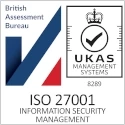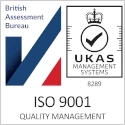15
+
YEARS OF
EXPERIENCE
1000
+
SUCCESSFUL
Projects
80
+
Satisfied
Clients

As organizations embrace both cloud and on-premises systems to support their operations, maintaining consistent visibility and performance across this blended environment has become one of the greatest challenges in modern IT. Hybrid monitoring addresses this challenge by providing a unified approach to observing, analyzing, and managing infrastructure performance across multiple platforms. It is a key element of proactive monitoring and maintenance, enabling businesses to achieve seamless oversight, optimized performance, and robust security in a hybrid world.
Understanding Hybrid Monitoring
Hybrid monitoring refers to the continuous tracking and analysis of systems, networks, and applications that span both cloud and on-premises environments. It brings together data from diverse sources into a single, unified view, allowing IT teams to monitor performance, availability, and security across the entire infrastructure.
In today’s technology landscape, most businesses operate a mix of traditional data centers and cloud-based services. This hybrid model offers flexibility and scalability but also introduces complexity. Each environment often comes with its own management tools, performance metrics, and security configurations. Without an integrated monitoring strategy, it becomes difficult to identify issues quickly or maintain consistent standards of performance and reliability.
Hybrid monitoring eliminates these silos by consolidating insights from all systems into one cohesive monitoring framework. It provides real-time visibility across all assets, ensuring that critical applications remain responsive, resources are efficiently utilized, and potential threats are identified before they escalate.





The Importance of Hybrid Monitoring
In a hybrid infrastructure, performance bottlenecks and vulnerabilities can emerge at any point—whether in the cloud, within an on-premises network, or in the connections between them. Hybrid monitoring is crucial for maintaining visibility across this entire ecosystem, ensuring that no part of the infrastructure operates in isolation.
Continuous monitoring allows organizations to detect issues early, often before they affect end users or disrupt operations. When latency spikes, workloads stall, or network traffic becomes irregular, hybrid monitoring tools can pinpoint the exact source of the problem, regardless of where it originates. This level of insight empowers teams to resolve issues quickly and maintain consistent service delivery.
Security is another critical factor. With data flowing between cloud services and on-premises systems, the risk of unauthorized access or data leakage increases. Hybrid monitoring strengthens security posture by observing all activity across both environments in real time. Suspicious patterns can be identified instantly, and corrective actions can be implemented before a threat spreads or causes damage.
From a business perspective, hybrid monitoring also supports better decision-making. It helps IT leaders understand workload performance, resource consumption, and cost distribution across environments, leading to smarter allocation and long-term efficiency.
How Hybrid Monitoring Works
Hybrid monitoring functions through a combination of data collection, correlation, and analysis. Monitoring agents and APIs gather performance and security data from both cloud platforms and on-premises systems. This data is aggregated into a central monitoring console, where it can be visualized, analyzed, and acted upon.
Modern hybrid monitoring solutions use automation and artificial intelligence to interpret this vast stream of information. They can recognize trends, predict potential failures, and generate alerts for anomalies in real time. By leveraging automation, IT teams can respond faster to incidents, often resolving them before users even notice a disruption.
A critical aspect of hybrid monitoring is interoperability. The monitoring framework must integrate seamlessly with various systems, including virtual machines, databases, containers, and network devices, across multiple cloud providers and data centers. This integration ensures a consistent monitoring experience, offering comprehensive visibility across the entire digital landscape.
Furthermore, hybrid monitoring enables organizations to adopt a centralized management approach. Instead of switching between different dashboards for cloud and on-premises environments, administrators can access unified insights that cover all layers of the infrastructure—from network performance and application delivery to storage capacity and security compliance.
Proactive Monitoring and Maintenance
Proactive monitoring and maintenance services to identify issues early, ensuring optimal performance and minimizing system downtime.Cloud Monitoring
Specialized Azure and AWS monitoring services to optimize cloud performance, ensure security, and minimize downtime for businesses.Azure and AWS Monitoring
Specialized Azure and AWS monitoring services to optimize cloud performance, ensure security, and minimize downtime for businesses.
The Role of Hybrid Monitoring in Proactive Maintenance
Within a proactive monitoring and maintenance strategy, hybrid monitoring serves as the foundation for predictive and preventative action. By analyzing real-time and historical data, organizations can identify early warning signs of potential issues—such as declining performance, capacity constraints, or security vulnerabilities—and address them before they affect business continuity.
This proactive approach transforms infrastructure management from reactive troubleshooting to continuous optimization. It helps teams fine-tune performance, plan for capacity growth, and ensure that both cloud and on-premises environments remain stable and aligned with business goals.
Hybrid monitoring also supports ongoing compliance and governance. By maintaining visibility into all systems, it ensures that policies are consistently applied across environments, reducing the risk of misconfigurations or non-compliance with industry standards.
Business Benefits of Hybrid Monitoring
The benefits of hybrid monitoring extend across operational efficiency, performance reliability, and security assurance. Businesses gain complete visibility into their hybrid environments, allowing them to detect and resolve issues faster while optimizing workloads and resources. This comprehensive view leads to better performance, fewer disruptions, and improved user satisfaction.
From a cost perspective, hybrid monitoring helps organizations control expenses by identifying underutilized resources and enabling more effective workload distribution. The ability to track performance across all environments also simplifies long-term capacity planning, ensuring that resources are scaled efficiently and strategically.
In terms of security, continuous monitoring reduces exposure to risks by ensuring that both cloud and on-premises systems adhere to best practices and remain protected against evolving threats. This level of protection enhances trust, compliance, and overall resilience.
Conclusion: Complete Visibility for a Connected Infrastructure
As the line between cloud and on-premises infrastructure continues to blur, hybrid monitoring has become an essential part of modern IT strategy. It provides the unified visibility, control, and insight needed to keep systems secure, stable, and high-performing at all times.
Within the framework of proactive monitoring and maintenance, hybrid monitoring ensures that businesses can detect, diagnose, and resolve issues before they impact operations. It transforms complex, multi-environment infrastructures into cohesive, manageable systems that deliver reliability and scalability without compromise.
In today’s digital-first world, where agility and uptime define success, hybrid monitoring empowers organizations to maintain confidence, control, and clarity across every layer of their technology landscape—no matter where their systems reside.

answer time
satisfaction
score
on initial call
same business
day









